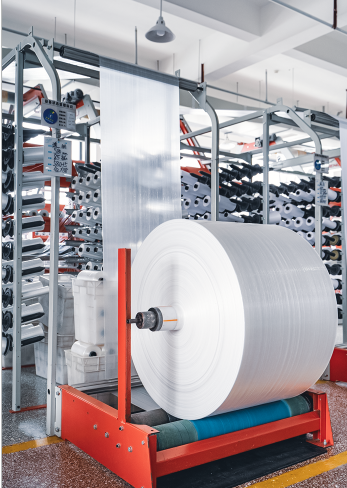Woven polypropylene material is a critical component in the production of PP woven bags, a staple in various industries due to their durability and versatility.
However, the cost of these materials can fluctuate significantly, impacting the pricing of woven polypropylene bags. What influences the price of PP woven bag materials to fluctuate? These factors influence the price of PP woven bag materials to fluctuate:
The primary raw material for producing woven polypropylene is derived from crude oil. As a petroleum-based product, polypropylene is closely tied to the fluctuations in oil prices. When crude oil prices rise, the cost of producing polypropylene typically increases, leading to higher prices for woven polypropylene material.
Conversely, a drop in oil prices can result in lower production costs, although this impact is often delayed due to existing contracts and production cycles.
The supply and demand for polypropylene on a global scale play a significant role in price fluctuations. An increase in demand, especially from industries such as packaging, construction, and agriculture, can drive up the price of woven polypropylene material.
Similarly, disruptions in supply, such as those caused by natural disasters or geopolitical tensions, can lead to shortages and subsequent price hikes. On the other hand, an oversupply in the market can lead to reduced prices, benefiting manufacturers of woven polypropylene bags.
The cost of producing polypropylene is influenced by various factors, including energy costs, technological advancements, and the efficiency of manufacturing processes. Improvements in production technology can reduce costs while rising energy prices can increase them.
Environmental regulations and policies can have a direct impact on the cost of producing woven polypropylene material. Stricter regulations on emissions and waste management can increase production costs, leading to higher prices for woven polypropylene bags.
Since polypropylene is traded globally, currency exchange rates can significantly affect the price of woven polypropylene material. Fluctuations in exchange rates can make imports more expensive or cheaper, depending on the strength of the local currency. This factor is particularly important for businesses importing raw materials from other countries.
Market speculation and the activities of investors can also influence the price of polypropylene. Speculative trading on futures markets can cause short-term price fluctuations, while investor sentiment and trends can lead to longer-term shifts.
While these factors are more challenging to predict, they remain a crucial component of the price dynamics for woven polypropylene material.




